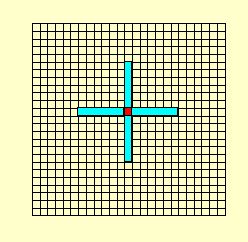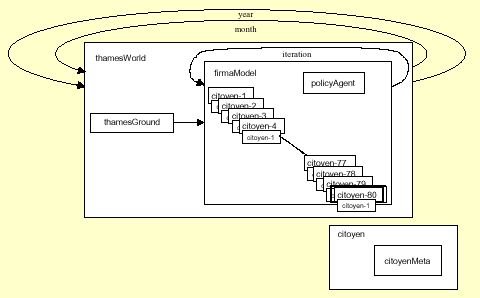 |
|
|
||
| other
modelling papers |
approaching agent based modelling | lake anderson with agents | perspectives in agent based social simulation | mental modelling and model moderation | modelling for firma: an example | supporting social simulation | a multi-agent toolkit | how to implement social policies | |  |
| |
||
| modelling for firma: an example : Scott Moss link to original thames prototype presentation: (printable version) | ||
|
|
||
contents | cultural theory | validation and world views | modelling and validation | first-cut model: agent motivation | modelling judgement, experience and world view | difference of world views | evaluating endorsement values |
| see below or click here for: thames prototype This model was developed in response to a request by Tom Downing to build a simple model of the Thames region for the SIRCH project (Social and Institutional Responses to Climate Change and Climatic Hazards: Drought and Floods). It was also developed in response to a meeting with Nils Ferrand and Olivier Barreteau, which indicated the canonicity of the problem and relevance of the model to the IMAGES project. Furthermore, preparing for a meeting with the Maastricht team led to an understanding of the role for agent based modelling in previous work. In developing a model, a number of issues and viewpoints have to be considered. These include for example, considerations raised by the Maastricht team with regard to cultural theory. This argues that there are three world views, which can be used to generate extreme scenarios, and generate world population models. These views are: hierarchist, egalitarian, and individualist. (see for example van Asselt and Rotmans (1996) Global Environmental Change, pp. 121-57, who drew on Thompson et al., Cultural Theory). There are issues here concerning uncertainty, and looking at the behaviour of real people rather than cultural types. This relation between world views and observation is indicated by the following quotes from Thompson et al.: "A further virtue of the framework is that the categories are formed from dimensions rather than being derived ad hoc from observation". (p. 14) "The categories in social life generated by the Ödimensions possess the dual advantage of holding on to the best in previous [theoretical] research Öwhile opening up relatively unexplored, but important, avenues of cultural expression" (p. 13) This argues that a 'bottom up approach' - even without observation - can inform specifications of world views. The example model turns out to give some pointers in this direction Problems previously addressed
modelling judgement, experience and "world view" The basis for this is the endorsements mechanism. Each agent has two endorsement schemes, one for evaluating rules of behaviour, and one for evaluating other agents. These rules of behaviour are judged by provenance; they are either invented by oneself, the observed behaviour of other agents, or are behaviour suggested by "authority" Endorsements are tokens. The endorsements on rules of behaviour were:
The relative value of each endorsement was chosen at random for each agent. Some would be strongly of one type, others of mixed type or competing types. Agents chose actions to take in prevailing circumstances depending on how valuably they were endorsed according to their own schemes. Two means in the literature:
If the results are sensitive to the evaluation method, endorsements are a bad technique.
prototype firma thames model: design and methodological issues the issue:
prototype model: agent motivation Agents of three broad types though none are identical with any of the others
the physical analogy Consumer agents placed at random on toroidal grid can "see" other consumers in limited number of nearby cells:
modelling judgement, experience and "world view" Each agent has criteria
This may be qualitatively represented -- e.g.:
rules of behaviour judged by provenance
model structure
results
experience from statistical mechanics
social and mechanical systems
validation as description
compositional design
purpose of compositional design
An example of a model in use is the model of critical incidence management at North West Water developed by Scott Moss in 1998 which can be found at: http://www.soc.surrey.ac.uk/JASSS/1/4/1.html
|
This website is the sole responsiblity of the Firma Project and does not represent the opinion of the European Community nor is the European community responsible for any use that might be made of the data appearing herein.


